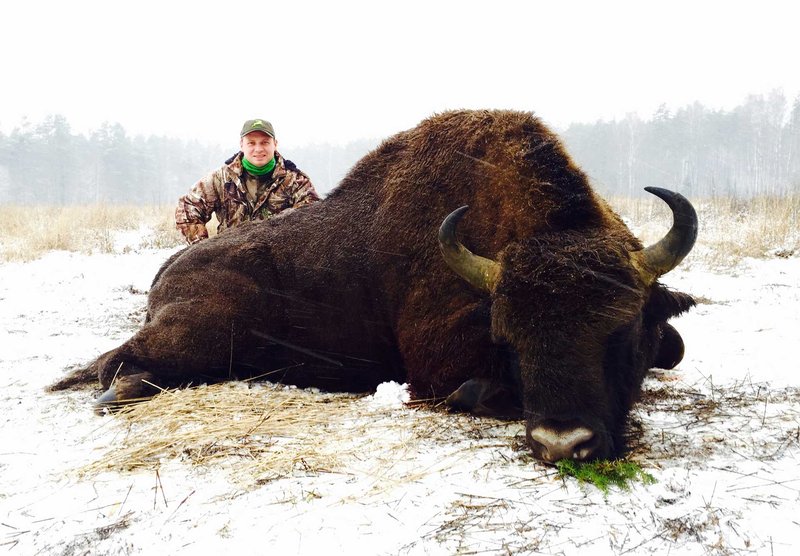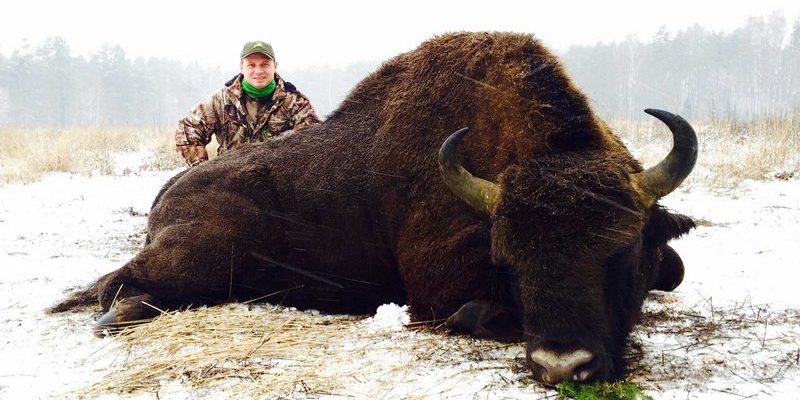
Imagine sitting with a friend over coffee, discussing how these bison not only survive but thrive in their environments. Their hunting strategies might surprise you, especially since they aren’t exactly your typical predators. Instead, these bison have their own unique approaches to finding food. Let’s dive into their world and explore what they eat and how they adapt to their natural surroundings.
What Do European Bison Eat?
European bison are primarily herbivores, which means their diet is mostly made up of plant material. They usually feast on a variety of grasses, herbs, and leaves. You might be wondering how they find enough food, especially given their size. Well, these bison are quite skilled at it.
In the summertime, they enjoy a feast of fresh, green grasses. This is when their diet is at its most diverse. Grasses are their go-to, but they also munch on tender shoots and even some shrubs. In winter, the menu changes a bit. With snow covering the ground, they turn to bark, moss, and woody plants—essentially, they adapt their diet to what’s available. Think of it as being flexible with your cooking ingredients when you’re trying to whip up a meal from whatever’s in the fridge.
Their ability to switch up their diet based on the season not only helps them survive but also plays a vital role in maintaining the ecosystem. By grazing on certain plants, they help control the growth of vegetation and promote biodiversity in their habitat.
Feeding Behavior and Social Dynamics
European bison are social animals that prefer to live in groups. This social structure plays a big role in their feeding behavior. Typically, they form small herds led by a dominant male, which helps them communicate and coordinate their feeding strategies.
When it comes to finding food, these bison are known to use a method called herbivory. That’s just a fancy way of saying they eat plants! Herding together allows them to cover more ground and locate food sources more effectively. Plus, there’s safety in numbers. By sticking together, they can keep an eye out for potential predators, which makes feeding time a little less stressful.
Interestingly, the bison’s natural hierarchy influences feeding as well. The dominant males usually get first dibs on the best feeding spots. However, females and younger bison aren’t left out—they often learn from the older ones where to find the most nutritious plants.
How European Bison Adapt Their Diet to Seasons
The changing seasons greatly influence the diet of European bison. In spring and summer, their food sources are plentiful. Fresh grasses and young shrubs are abundant, making it easier for them to find high-nutrient meals. You could compare it to enjoying a summer BBQ—lots of choices to satisfy your cravings!
As the cold months arrive, things get trickier. Remember the cozy feeling of warming up by a fire with your favorite comfort food? Well, that’s not how bison roll in winter. Instead, they rely on hardier options like woody plants and tree bark. It’s almost like they’ve learned to make the best of what’s available, even when their culinary options are limited.
This dietary adaptation not only helps them survive but encourages healthy land use. By eating different types of plants based on what’s available, they prevent certain species from taking over and help maintain a balance in their ecosystem.
Impact of Diet on Bison Behavior
What they eat doesn’t just fill their bellies; it also affects their behavior and daily routines. Since bison need a lot of food to sustain their massive bodies, they spend a significant amount of time foraging. Just imagine how many snacks you’d need if you were as big as a bison!
Typically, they’ll graze for about 10 to 12 hours a day, which is like having a full-time job just for eating. This constant search for food means they have to be vigilant for predators, which can also influence their grazing patterns. For example, they might choose to forage in more open areas where they can spot danger, rather than dense forests where they might feel trapped.
Their feeding habits also include a bit of communal activity. You may observe them taking turns at the best grazing spots, almost like waiting your turn for the last piece of pizza at a party. This behavior not only fosters social bonds but also ensures that everyone in the herd gets a share of the goodies.
Environmental Challenges and How Bison Overcome Them
European bison face numerous environmental challenges that can impact their diet and survival. Habitat loss, climate change, and competition with other species can make food scarcer. Just like people might struggle to find their favorite foods in a changing grocery store, bison experience similar hardships in the wild.
To combat these challenges, bison have evolved several strategies. First, their strong digestive systems allow them to efficiently extract nutrients from tough plant materials. They can effectively utilize less ideal food when necessary, which helps them thrive even under pressure.
Additionally, they play a critical role in shaping their environments. By grazing, they encourage new growth and create opportunities for other plant species to thrive. In essence, bison are like nature’s gardeners, helping to cultivate a diverse ecosystem.
Conservation and the Future of European Bison
With the European bison’s unique diet and hunting strategies, their future remains closely tied to conservation efforts. Over the past century, these majestic animals faced significant threats, including hunting and habitat destruction. But thanks to dedicated conservation programs, their populations are on the rise again.
Preserving their natural habitats is crucial for ensuring they have access to their preferred food sources. Conservationists work to restore and protect the forests and grasslands these bison call home. They also monitor the bison’s diet to ensure they have a healthy variety of plants to thrive on.
You might find it inspiring that a creature so large and powerful also relies on such delicate ecosystems for its survival. Every effort counts when it comes to protecting these incredible animals and their habitats.
Why Understanding European Bison Matters
So, why should you care about the diet and hunting strategies of the European bison? Understanding these aspects gives us insight into their role in the ecosystem and the way they interact with their environment. It’s a reminder that every creature plays a part in maintaining the delicate balance of nature.
By appreciating these animals and supporting their conservation, we contribute to the health of our planet. It’s a win-win situation where protecting one species helps to protect many others.
In a world where we often overlook the importance of wildlife, taking the time to learn about the European bison and its needs can inspire us to take action and foster respect for nature.
As we wrap up this exploration of the diet and hunting strategies of the European bison, remember that every small effort can lead to significant change. The more we understand and advocate for these magnificent creatures, the more likely we are to see a flourishing and diverse ecosystem for future generations.

